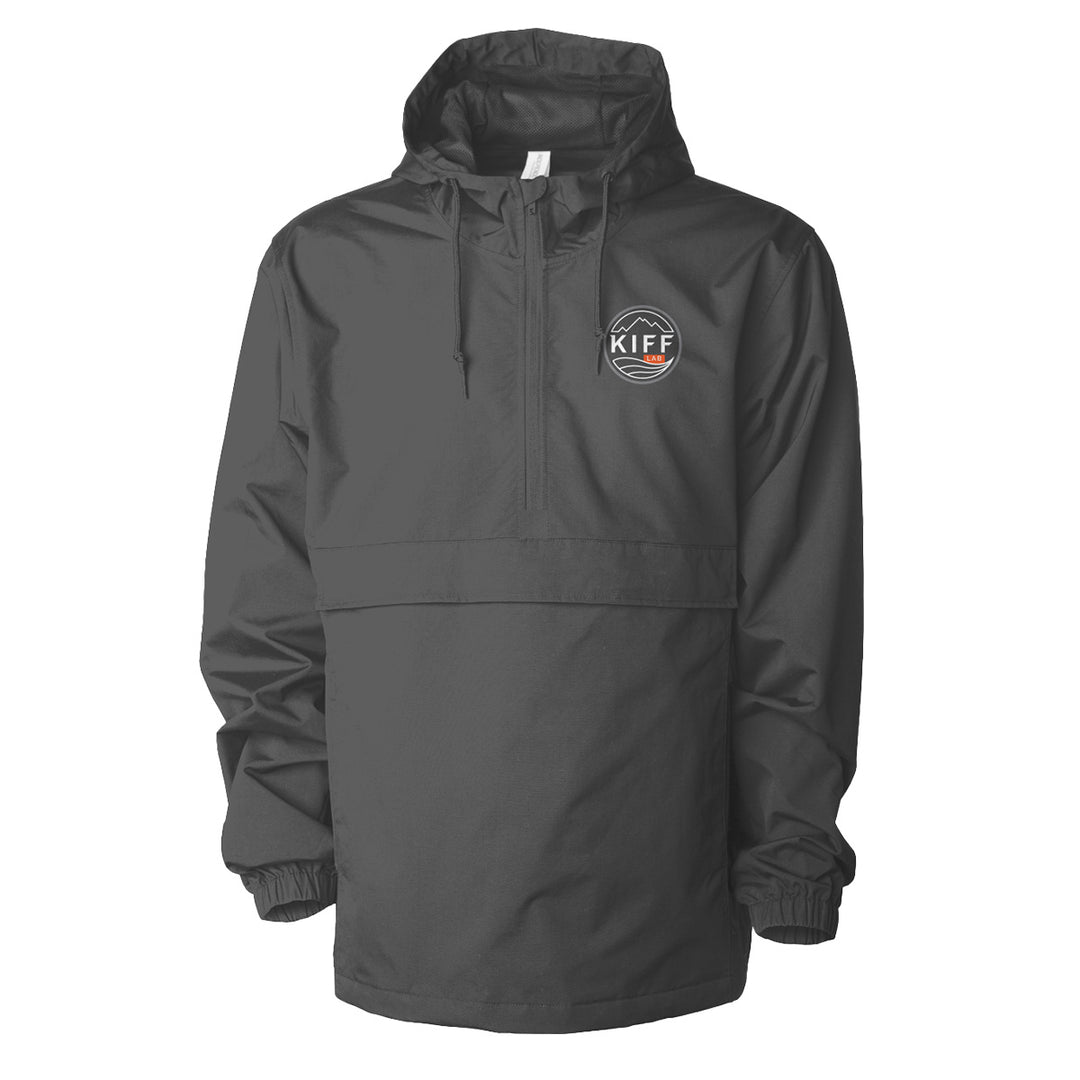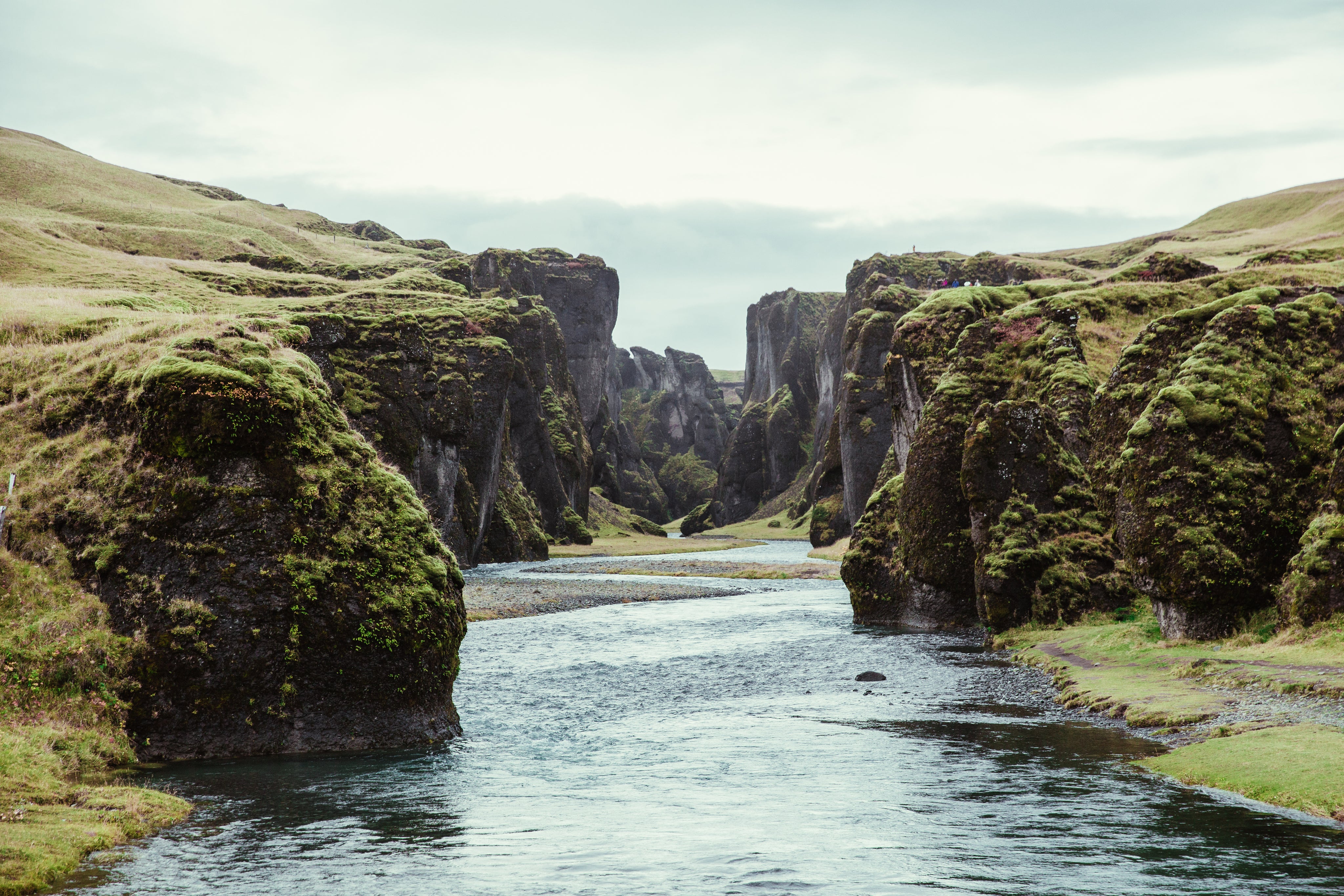Kayak 101: Tips for a Safe and Enjoyable Kayaking Experience
At Kifflab, our passion for the great outdoors and sustainable adventuring runs deep, especially when it comes to the world of kayaking. Understanding the basics of kayaking will help you navigate the waterways with confidence. Here are some essential tips to keep in mind:
- Wear a Personal Floatation Device (PFD): Always wear a properly fitted PFD, also known as a life jacket, when kayaking. It will keep you afloat in case of an accidental capsizing or any other unexpected incidents. Ensure that the PFD is U.S. Coast Guard approved and suitable for your body size.
- Learn and practice proper paddling techniques: Familiarize yourself with efficient paddling techniques, such as proper grip and stroke techniques. Practice these techniques to develop the necessary skills for maneuvering your kayak effectively.
- Know the water conditions: Before setting out, check the weather forecast and understand the current water conditions. Strong winds, rough waters, or hazardous currents can make kayaking risky. Avoid paddling in unfavorable conditions or choose sheltered areas if possible.
- Inform someone of your plans: Always let someone reliable know the details of your kayaking trip, including your intended route and expected return time. In case of an emergency, this information can be crucial for rescue teams to locate you quickly.
- Carry essential safety equipment: Equip your kayak with essential safety gear, which may include a whistle or signaling device, a bilge pump to remove excess water, a compass or navigation tools, and a first aid kit. These items can prove invaluable in unexpected situations.
- Dress appropriately: Dress for the conditions, taking into account the water and air temperature. Wear quick-drying clothing to avoid hypothermia and choose footwear that provides good traction for secure footing on slippery surfaces.
- Practice self-rescue techniques: Learn and practice self-rescue techniques, such as how to reenter your kayak after capsizing, how to empty water from the kayak, and how to perform a T-rescue to help a fellow kayaker in distress..
Choosing the Right Equipment
It's crucial to choose the right equipment. Here are some tips to help you make the right decisions:
- Select the Right Kayak: Consider your skill level, intended use, and the type of water you'll be paddling on. Recreational kayaks are great for beginners and calm waters, while sea kayaks are more suitable for longer distances and rougher conditions.
- Check the Kayak's Weight Capacity: Ensure that the kayak can support your weight and any additional gear you plan to bring along. It's important not to exceed the weight limit, as it can impact stability and safety.
- Wear a Properly Fitted Personal Flotation Device (PFD): A PFD is essential for every kayaker, regardless of swimming ability. Choose a certified PFD that fits snugly. Make sure to adjust it properly before hitting the water.
- Invest in a Reliable Paddle: Consider the material, length, and blade shape of the paddle. Lightweight materials like carbon fiber or fiberglass can help reduce fatigue during long paddles. The paddle's length should be suitable for your height, and the blade shape should match your style of kayaking.
- Dress Accordingly: Dress for the water temperature rather than the air temperature, as you might get wet. Wear quick-drying clothes or a wetsuit in cold water. It's also crucial to protect yourself from the sun by wearing a hat, sunscreen, and lightweight, breathable clothing.
- Carry Essential Safety Gear: Pack a whistle, a flashlight, a first aid kit, and a waterproof phone case in a dry bag. These items can be lifesavers in case of an emergency.
Understanding Weather and Water Conditions
When heading out for a kayaking adventure, it is crucial to have a good understanding of the weather and water conditions. This knowledge will not only ensure a safe experience but also enhance your enjoyment on the water. Here are some key tips to keep in mind:
- Check the weather forecast: Before you embark on your kayaking journey, always check the weather forecast. Pay attention to wind speed, precipitation, and any storm warnings. A sudden change in weather conditions can make kayaking challenging and dangerous.
- Be aware of wind direction: Wind plays a significant role in kayaking. Know the prevailing wind direction in your area and plan your route accordingly. Paddling against the wind can be exhausting, so try to paddle with the wind at your back whenever possible.
- Understand tidal and current patterns: If you will be kayaking in coastal areas or rivers, it is essential to understand tidal and current patterns. These can greatly affect your paddling speed and overall navigation. Consult tide charts and current maps to ensure you are aware of any potential challenges.
- Be conscious of water temperature: Water temperature is an important factor to consider, especially if you'll be kayaking in cold or unpredictable conditions. Dress appropriately and take necessary precautions to prevent hypothermia.
- Assess water conditions: Before launching your kayak, take a moment to observe the water conditions. Look for signs of strong currents, large waves, or debris that could pose a risk. If you are unsure about the conditions, it might be best to postpone your trip or seek advice from experienced kayakers.
Learning Basic Paddling Techniques
To have a safe and enjoyable kayaking experience, it's essential to learn and master some basic paddling techniques. These techniques will not only help you navigate the waters effectively but also make your kayaking adventure more enjoyable. Here are some important paddling techniques to remember:
- Grip and posture: Start by gripping the paddle with both hands, slightly wider than shoulder-width apart. Maintain a relaxed grip, ensuring that your knuckles align with the blade's face. Sit up straight with your feet flexed and your knees slightly bent. Proper posture will help you maintain balance and prevent fatigue.
- Forward stroke: The forward stroke is the most basic and essential technique for propelling your kayak forward. To perform this stroke, rotate your torso and reach forward with the upper hand, planting the paddle blade into the water near your feet. Pull the blade towards your hips while rotating your torso back to the starting position. Repeat this movement on the other side to maintain a straight path.
- Reverse stroke: The reverse stroke is used to slow down or move backward. Instead of reaching forward, start with the paddle blade close to your hip. Push the blade away from your hip and towards the stern of the kayak, using your torso rotation and arm muscles. Repeat on the other side as needed.
- Sweep stroke: The sweep stroke is used to turn your kayak smoothly. To perform this stroke, extend the paddle blade out to the side of the kayak and submerge it deeply. Sweep the paddle blade in a wide arc from the bow to the stern, using your torso rotation to provide power. This will help you turn your kayak in the desired direction.
- Bracing: Bracing is an important technique for maintaining stability in rough waters or when encountering waves. To brace, rotate your kayak slightly towards the side you want to brace on. Place the blade of your paddle flat on the water's surface next to the kayak. Apply gentle downward pressure on the paddle to stabilize your kayak.
Practicing Self-Rescue Skills
To ensure your safety while kayaking, it is essential to practice self-rescue skills. These skills are crucial in case of unexpected situations such as capsizing or getting stuck. Here are some tips to help you master self-rescue techniques and handle emergencies effectively:
- Paddle Float Rescue: This technique involves using a paddle float to assist in re-entering your kayak after a capsize. Secure the float to the end of your paddle, inflate it, and make sure it is securely attached to the paddle shaft. By placing the paddle float across the cockpit, you can create a stable platform to climb back into your kayak easily.
- Eskimo Roll: This advanced technique is used to right yourself without exiting the kayak. By using a combination of body movements and paddle strokes, you can roll your kayak back upright while remaining inside. Proper training and practice with an experienced instructor are essential to perform this skill safely and effectively.
- Towing Systems: Carrying a towing system is vital during longer kayaking trips or when paddling in challenging conditions. If someone in your group encounters difficulties, a towing system allows you to assist them by attaching a line to their kayak and towing them to safety. Practice attaching and using a towing system to ensure you are proficient in this technique.
- Wet Exit: Knowing how to perform a swift and controlled wet exit is essential in case of a capsize. Practice flipping your kayak upside down and quickly exiting the cockpit. By mastering this technique, you can maintain calmness and minimize the risk of becoming entangled or trapped underwater during an emergency.
- Swimming and Self-Recovery: In some situations, you may need to swim to safety if your kayak becomes incapacitated. Practice swimming with your personal flotation device (PFD) on to maintain buoyancy. Learn how to retrieve your kayak, empty the water, and re-enter it safely in various water conditions.
Navigating Hazards and Obstacles
When kayaking, it is essential to know how to navigate through various hazards and obstacles you may encounter along the way. Here are some tips to help you stay safe and have a enjoyable experience on the water:
- Be aware of your surroundings: Before you set off on your kayaking adventure, take the time to familiarize yourself with the area and any potential hazards. Look for signs of submerged rocks, strong currents, or shallow waters that could pose a risk.
- Follow navigational aids: Pay attention to any buoys or markers that indicate safe passages. These aids are placed in the water to guide boaters and prevent them from entering dangerous areas.
- Learn proper paddle techniques: By mastering effective paddling techniques, you can easily maneuver around obstacles such as fallen trees, rocks, or debris. Practice different strokes, such as the draw stroke or sweep stroke, to effortlessly navigate tight spots.
- Keep a safe distance: Always maintain a safe distance from other kayakers and boats to avoid collisions. It's also a good idea to give larger vessels the right of way, as they may have limited maneuverability in certain areas.
- Watch out for changing water conditions: Be observant and stay in tune with the water conditions as they can change quickly. Keep an eye on weather forecasts and be prepared to adjust your plans accordingly if strong winds, heavy rain, or lightning storms are predicted.
- Wear proper safety gear: Ensure you have the right safety gear with you, including a personal flotation device (PFD), a whistle, and a headlamp or flashlight if you plan to kayak during low light conditions. These items will help keep you visible and make it easier to call for help if needed.
Understanding Right of Way and Navigation Rules
When kayaking, it's important to have a good understanding of right of way and navigation rules to ensure a safe and enjoyable experience on the water. These rules are in place to prevent accidents and maintain order when multiple vessels are sharing the same space. Here are some key points to keep in mind:
- Stay to the right: Just like driving on the road, it's important to paddle on the right side of the waterway. This helps to avoid collisions and allows for a smooth flow of traffic.
- Yield to larger vessels: Give way to larger boats such as motorboats, sailboats, and commercial vessels. They have less maneuverability and it's easier for you to adjust your course than for them.
- Crossing paths: When crossing paths with another kayaker or vessel, it's generally safest to pass behind them. This ensures that you have enough time and space to maneuver and avoids any confusion or potential accidents.
- Approaching from behind: If you are approaching another vessel from behind, make your intentions known by signaling your presence. A simple shout or a few taps on your kayak with your paddle can help the other person become aware of your presence and avoid any sudden movements.
- Maintain a safe distance: It's important to maintain a safe distance from other vessels to avoid collisions and give everyone enough space to maneuver. Keep a lookout for any signals or gestures from other boaters indicating their path or intentions.
- Know local regulations: Different bodies of water may have specific rules and regulations that you need to adhere to. Take the time to familiarize yourself with these before heading out on your kayak adventure.
Dealing with Emergencies on the Water
When you're out on the water in a kayak, it's important to be prepared for any emergencies that may arise. Here are some tips to help you handle unexpected situations and ensure your safety.
- Always wear a life jacket: No matter how experienced you are as a kayaker, wearing a life jacket is non-negotiable. It can potentially save your life in case you capsize or encounter rough conditions.
- Buddy system: It's always a good idea to kayak with a buddy. This way, you'll have someone to help you in case of an emergency. Make sure to communicate with each other and establish a plan beforehand.
- Learn basic first aid: Knowing basic first aid can be extremely helpful in emergency situations. Consider taking a first aid course that specifically covers water-related emergencies.
- Be aware of weather conditions: Before heading out, check the weather forecast. Sudden changes in weather can be dangerous, so it's essential to know what to expect. If the conditions become unfavorable, find a safe place to wait it out.
- Bail out water carefully: If water starts to accumulate in your kayak, you need to remove it promptly to prevent capsizing. Use a bilge pump or a sponge to bail out the water without losing balance.
- Stay calm if you capsize: Capsizing can happen even to the most experienced kayakers. If it does, stay calm and try to escape from the kayak. Hold onto your paddle and push the kayak to shore or await rescue. Remember to stay with your kayak as it provides flotation.
- Signal for help: In a critical situation, it's important to have a way to signal for help. Carry a whistle or a signal mirror, which can greatly increase your chances of being seen and rescued.
- Be prepared with a communication device: It's wise to carry a waterproof communication device like a VHF radio or a waterproof phone case. These tools can be crucial in case of emergencies where you need to call for help.
Self Rescue
Being able to rescue yourself in the event of a capsize or other emergency is an essential skill for every kayaker. Here are some key tips to remember for self-rescue situations:
- Stay calm: The most important thing is to stay calm and composed. Panicking will only make the situation worse. Take deep breaths and assess the situation.
- Assess the water conditions: Before attempting any self-rescue, assess the water conditions. If it's rough or there are strong currents, it may be safer to wait for assistance or call for help. Safety should always be your top priority.
- Get back in your kayak: If it's safe to do so, try to get back in your kayak. Flip the kayak back over by pushing down on the opposite side while pulling yourself up. Use your paddle or a nearby object for support if needed.
- Use the T-rescue technique: If you're unable to get back in your kayak or it's too unstable, you can use the T-rescue technique. This involves another paddler stabilizing your kayak while you crawl back in from the opposite side.
- Practice self-rescue techniques: It's crucial to practice self-rescue techniques in a controlled environment before heading out on the water. This allows you to become familiar with the process and build confidence in your abilities.
Tips for Paddling in Groups
When kayaking in a group, it's important to maintain a sense of teamwork and ensure everyone's safety. Here are some tips to help you paddle in groups effectively:
- Communication is key: Establish clear communication signals or hand gestures to convey important messages during the paddle. This will help keep everyone in the group informed about any hazards, changes in direction, or assistance needed.
- Stick together: Maintain proximity to the other members of your group. This will make it easier to coordinate movements and provide assistance if someone encounters difficulties.
- Choose suitable routes: Consider the skill levels and experience of all participants in your group and choose appropriate water routes. It's crucial to ensure that everyone is comfortable with the conditions and can handle any potential challenges along the way.
- Keep an eye out for each other: Stay alert and watch out for your fellow paddlers. If someone starts falling behind or seems to be struggling, slow down or stop to wait for them. No one should be left behind or feel abandoned during the journey.
- Use the buddy system: Pair up with a buddy within the group. This way, you can keep an eye on each other and provide support if needed. It's an excellent safety measure, especially if you're kayaking in challenging or unfamiliar waters.
- Practice self-rescue techniques: While the group should always be ready to help one another, it's important for each individual to have a basic understanding of self-rescue techniques. Knowing how to re-enter your kayak after capsizing or how to assist in rescuing others can make a significant difference in emergency situations.
- Be considerate of others: Remember to respect the natural environment and other kayakers or watercraft users you encounter. Maintain a reasonable distance to avoid collisions and minimize any disturbances to wildlife.












